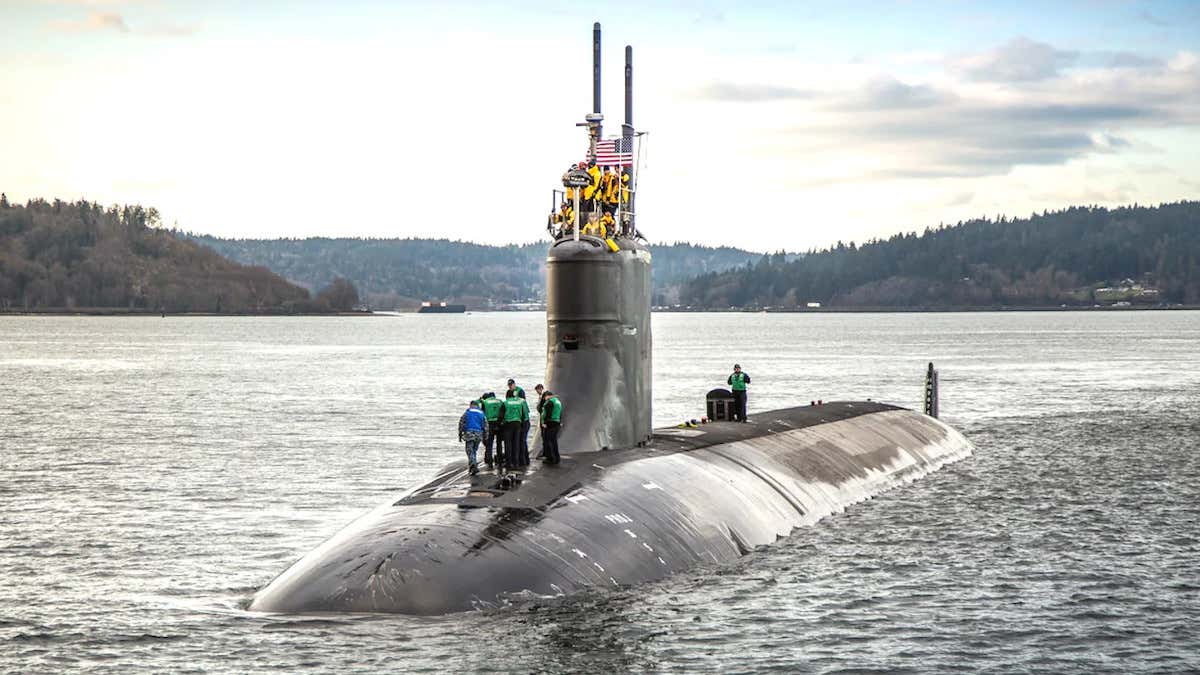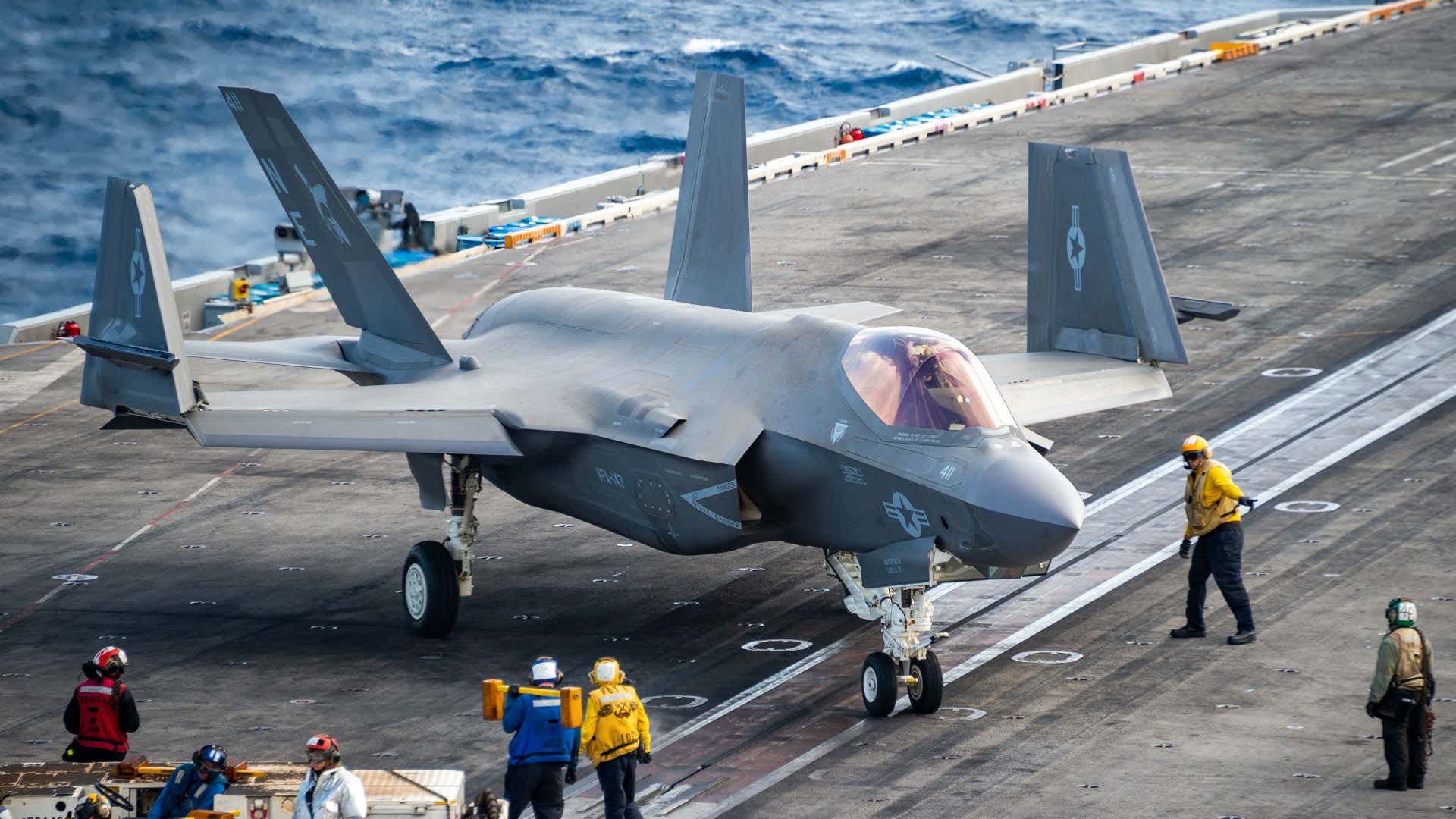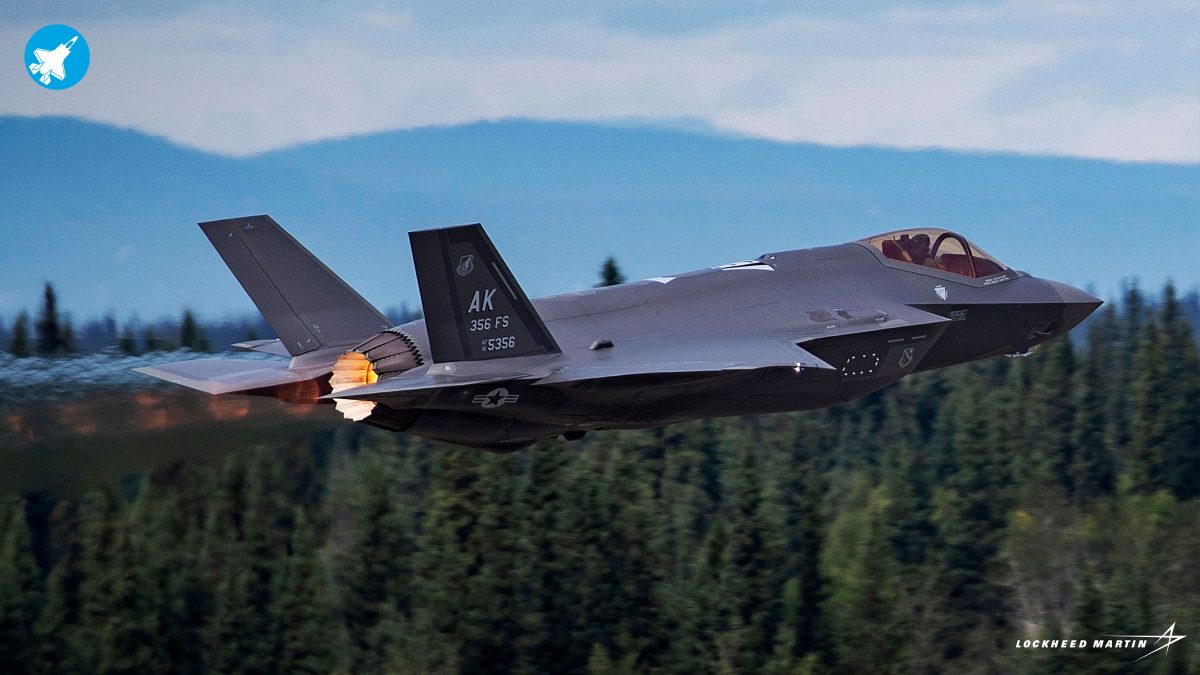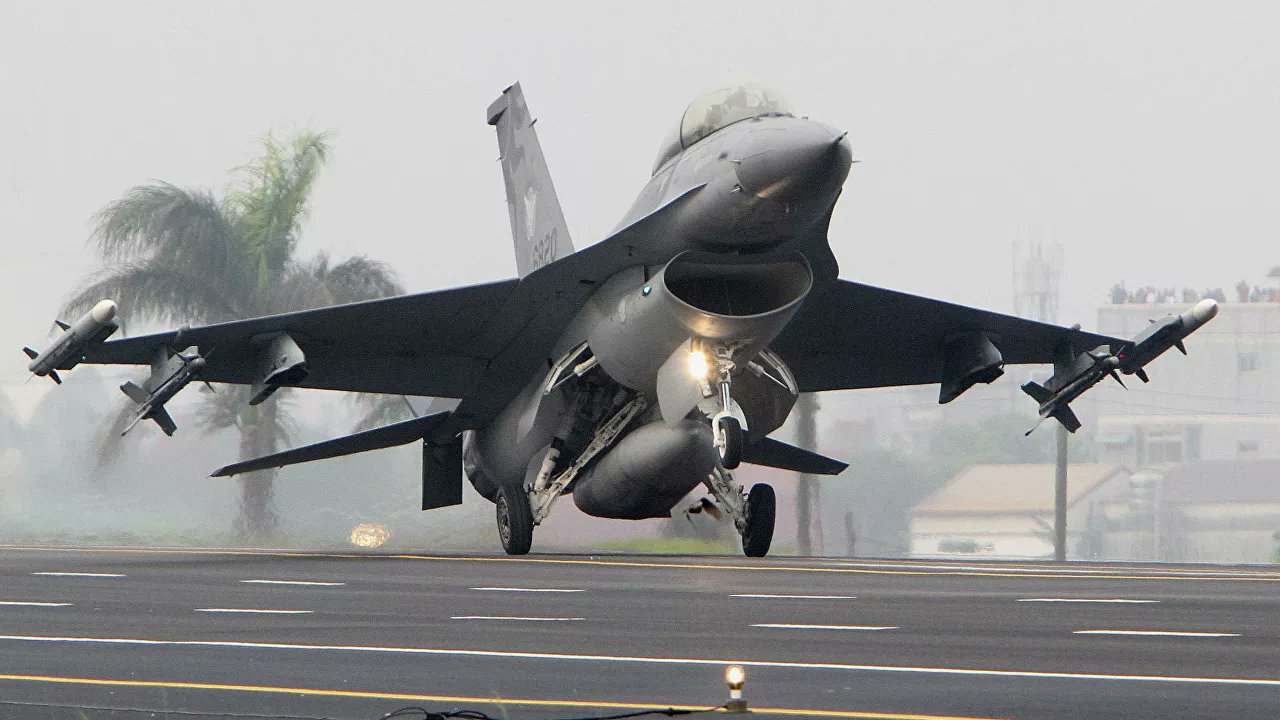The territorial dispute between Beijing and some Southeast Asian countries over the South China Sea is well known. This has triggered a geopolitical rivalry between China and the US even as the latter continues to assert freedom of navigation in the troubled waters.
The region has also become an accident-prone zone with a number of mishaps involving high-end military hardware reported in the recent past. Some of the most advanced warships and fighters jets including the pride of the United States – the F-35 stealth warplanes, have met accidents in the region.
Is there are a China factor?
USS Connecticut Submarine
Last October, the US Navy disclosed that its nuclear-powered attack submarine, USS Connecticut, had collided with an “unknown object” while operating in the South China Sea, injuring more than 10 crew and causing partial damage to the vessel itself.
The satellite images of USS CONNECTICUT after the collision in south China sea . shows the sonar dome of the submarine is completely gone and the sonar bow is visible
First pic:satellite image of USS CONNECTICUT after collisionSecond pic:visible sonar bow pic.twitter.com/k5VWmkVJue
— Mrcool (@Mrcool63040811) October 28, 2021
In early November, the final report of its investigation was released, following which three USS Connecticut officials were dismissed from their duties.
However, this sparked widespread concern in Beijing, which accused Washington of failing to provide timely and complete information about the incident, citing a “lack of transparency and lack of responsibility” on Washington’s part.
The actual site of the incident was also a matter of debate. It was later believed that the accident occurred near China’s disputed Paracel Islands in the South China Sea, implying that PLA Navy could have noticed the American submarine on its route to Guam but was unaware of its damaged state.
Chinese Foreign Ministry spokesman Wang Wenbin said Beijing urges Washington to provide an explanation of the vessel’s “navigational intentions, the specific location of the accident, whether it was in the exclusive economic zone or territorial waters of any country, and whether it caused any nuclear leak or damage to the ocean environment”.

The submarine reached the US Navy’s base in Guam after the mishap. The first publicly available picture of the moored vessel revealed that the sonar dome of the Seawolf-class submarine’s nose had been removed, indicating that its bow sonar system had been wrecked in the incident.
China’s concern about the incident can be gauged by the fact that the state-run Global Times later started an online petition demanding details from the US military regarding the accident. GT claimed that the US Navy is known for sailing recklessly in the South China Sea in the name of “freedom of navigation”, and many of these operations are provocative and unprofessional, such as crossing into other ships’ normal sailing routes, trespassing into other navies’ exercise zones, and intruding into other countries’ territorial waters.
US Navy F-35C
The US Navy’s F-35C crash is the latest in a chain of F-35 mishaps in the region. The stealth fighter crashed-landed on the deck of the USS Carl Vinson aircraft carrier during routine operations on January 24, the navy said, injuring six sailors and the pilot, who ejected from the plane before it fell into the sea.
The F-35C is a variant of the fighter developed specifically for use from US Navy aircraft carriers. Experts believe the US salvage ships could take many days to find the wreckage of the plane, potentially allowing Chinese submarines to find it first.
This could enable PLA to access the technology used in the US stealth fighter plane. However, Beijing clearly said that it has “no interest” in the American plane.

The US Navy has kept a low profile in its F-35C recovery activities, but the Japan Coast Guard released a navigational warning on January 29, stating that salvage operations were underway “until further notice” in a location in the northern section of the South China Sea.
Previously, the Navy recovered an MH-60S helicopter that had crashed into the Philippine Sea in January 2020, bringing the wreckage to the surface from a depth of more than 3.6 miles.
South Korea’s F-35A
The pilot of a South Korean F-35 executed an emergency “belly landing” at an airbase on January 4 after the landing gear malfunction due to technical difficulties, EurAsian Times reported.
Following an initial inquiry, it was discovered that the South Korean F-35’s left engine intake had been damaged by a bird hit before it crashed. A thorough investigation into the plane’s avionics and landing gear, on the other hand, is still underway.

A gear-up landing, often known as a belly landing, is extremely dangerous for the pilot. In this case, however, the pilot was unharmed, according to Yonhap News Agency, which also noted that this is the first known belly landing since the US began exporting F-35A fighter fighters to other countries.
“Its landing gear should have been down, but it wasn’t,” a South Korean Air Force official previously told Stars and Stripes. “So, it made a belly landing.” Officials who talked to the South Korean media about the F-35A emergency landing refused to reveal what type of bird the plane collided with or the extent of the aircraft’s damage.
Japan’s F-35A
On April 9, 2019, a Japanese F-35A disappeared from radar around 135 kilometers (84 miles) east of Misawa Air Base. It was one of the four F-35As that took off for a training mission from Misawa Air Base at 6.59 pm, Japan time, on that day.
The pilot, Major Hosomi, participated in aerial combat training and shot down two enemy planes in a simulated dogfight, according to the JASDF.
His last communication was delivered in a “calm voice,” according to the JASDF’s investigation. Hosomi’s plane crashed into the Pacific Ocean at almost 1,100 kilometers per hour (683 miles per hour) speed, just seconds after the pilot’s last transmission was received, with no apparent attempt by Hosomi to avert a collision.

Spatial disorientation was blamed by the Japanese military for the disaster. Spatial disorientation is a situation in which a pilot cannot correctly sense the position, attitude, altitude, or motion of an airplane. Maj. Akinori Hosomi remains were later recovered from the ocean.
Parts of the F-35As heavily damaged flight data recorder were also recovered a month after the incident. However, the majority of the plane’s wreckage is still 5,000 feet below the surface.
In December 2021, an Air Self-Defense Force F-35A stealth fighter made an emergency landing at Hakodate Airport in the northernmost Japan prefecture of Hokkaido, according to the Defense Ministry. The fighter had experienced a problem while flying over the Sea of Japan, around 190 kilometers west of the base.
Taiwan’s F-16 Viper
On January 11, a newly upgraded Taiwanese F-16V (Viper) fighter plane went missing during a training mission over the sea. The aircraft lost touch with the airbase in southeastern Taiwan, according to Taiwan’s air force. The F-16V jet crashed into waters east of the island shortly after taking off from Chiayi Air Force Base.
The crashed fighter jet had apparently been chasing and confronting PLAAF combat planes that regularly penetrate Taiwanese airspace. Pilot fatigue remains a cause of concern as Taiwan has to scramble fighter jets to ward off PLAAF warplanes on a regular basis. Additionally, there are fewer pilots available to fly the newly upgraded F-16Vs.

The F-16 Viper is considered the most advanced variant of the Fighting Falcon and is crucial for Taiwan’s defenses. The self-governing island received 64 advanced F-16V “Viper” aircraft in November 2021.
These planes, which represent Taiwan’s most sophisticated fighter jet squadron, are intended to improve the country’s defensive capabilities. By the end of 2023, Taiwan wants to modernize all of its 141 F-16 A/B fighter planes.
Japan’s Powerful F-15
On January 31, 2022, a Japanese Air Self-Defense Force (JASDF) F-15DJ fighter crashed during a training exercise. The Mitsubishi F-15J, a domestic variant of the McDonnell Douglas F-15 Eagle, is the primary interceptor of the JASDF.
The plane that crashed, registered as 32-8083, was part of the Tactical Fighter Training Group, which serves as the aggressor in aerial combat training. The plane had barely taken off from Komatsu Air Base on Japan’s northern coast when radar contact was lost. There were two pilots on board.

The aircraft’s outer panel and survival supplies were recovered later, indicating that the plane had crashed. The crew has yet to be found, therefore search and rescue activities are still going on.
“To ensure flight safety, the Air Force Chief of Staff has instructed all aircraft to be thoroughly examined before and after each flight, and to educate all operators on emergency procedures,” Japan’s Defense Minister Nobuo Kishi told reporters, adding, “We have no plans to halt the F15 fighter’s flying.”
The upgrading of Japan’s F-15 fleet into the so-called F-15JSI (Japan Super Interceptor) variant was included in the fiscal year 2022 budget, which was announced in December 2021. The upgraded variant would operate as the primary fighter jet alongside Japanese F-35s in case of any Chinese adventurism.
Reason For Crashes?
Nitin J Ticku, a strategic analyst and Managing Editor of The EurAsian Times says that the Indo-Pacific region is fast emerging as the world’s most militarized zone racing ahead of the Middle East, where the US is fast losing interest.
It is easy to ignite conspiracy theories (like one of India’s analysts linked the chopper crash of India and Taiwan’s defense commanders to China which was later rubbished by the government in its official investigation).
Since the Indo-Pacific is in the ‘center of action’ and the US is equipping its allies with the latest technology which is not really battle-prooven, there are reasonable chances of mishaps, as we have seen. You would see it’s mainly the newer or upgraded jets that are meeting accidents in comparison to tried and tested aircraft.
Another point could be extensive & repeated military drills and fighter pilots being overstretched, exhausted to intercept Chinese warplanes. A recent EurAsian Times report highlighted that one of Taiwan’s most advanced fighter jets crashed during a routine rehearsal which hints at issues with pilot training and fatigue from responding to frequent PLA sorties.
There certainly is a China factor behind the crashes but certainly not China, Ticku concludes.
- Contact the author at ashishmichel@gmail.com
- Follow EurAsian Times on Google News




